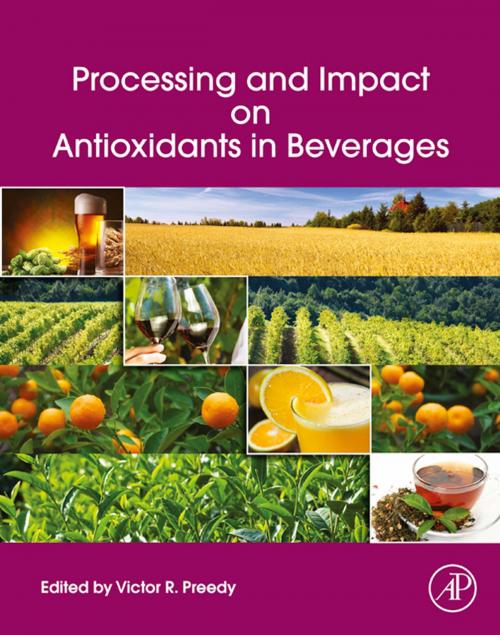Processing and Impact on Antioxidants in Beverages
Nonfiction, Science & Nature, Technology, Food Industry & Science, Health & Well Being, Medical| Author: | ISBN: | 9780124046955 | |
| Publisher: | Elsevier Science | Publication: | April 5, 2014 |
| Imprint: | Academic Press | Language: | English |
| Author: | |
| ISBN: | 9780124046955 |
| Publisher: | Elsevier Science |
| Publication: | April 5, 2014 |
| Imprint: | Academic Press |
| Language: | English |
Processing and Impact on Antioxidants in Beverages presents information key to understanding how antioxidants change during production of beverages, how production options can be used to enhance antioxidant benefit, and how to determine the production process that will result in the optimum antioxidant benefit while retaining consumer acceptability.
In the food industry, antioxidants are added to preserve the shelf life of foods and to prevent off-flavors from developing. These production-added components also contribute to the overall availability of essential nutrients for intake. Moreover, some production processes reduce the amount of naturally occurring antioxidants. Thus, in terms of food science, it is important to understand not only the physiological importance of antioxidants, but what they are, how much are in the different food ingredients, and how they are damaged or enhanced through the processing and packaging phases.
This book specifically addresses the composition and characterization of antioxidants in coffee, green tea, soft drinks, beer, and wine. Processing techniques considered here include fermentation and aging, high-pressure homogenization, enzymatic debittering, and more. Lastly, the book considers several selective antioxidant assays, such as Oxygen Radical Absorbance Capacity (ORAC) and Trolox Equivalent Antioxidant Capacity (TEAC) assays.
- Provides insights into processing options for enhanced antioxidant bioavailability
- Presents correlation potentials for increased total antioxidant capacity
- Includes methods for the in situ or in-line monitoring of antioxidants to reduce industrial loss of antioxidants in beverages
- Proposes processing of concentrated fractions of antioxidants that can be added to foods
Processing and Impact on Antioxidants in Beverages presents information key to understanding how antioxidants change during production of beverages, how production options can be used to enhance antioxidant benefit, and how to determine the production process that will result in the optimum antioxidant benefit while retaining consumer acceptability.
In the food industry, antioxidants are added to preserve the shelf life of foods and to prevent off-flavors from developing. These production-added components also contribute to the overall availability of essential nutrients for intake. Moreover, some production processes reduce the amount of naturally occurring antioxidants. Thus, in terms of food science, it is important to understand not only the physiological importance of antioxidants, but what they are, how much are in the different food ingredients, and how they are damaged or enhanced through the processing and packaging phases.
This book specifically addresses the composition and characterization of antioxidants in coffee, green tea, soft drinks, beer, and wine. Processing techniques considered here include fermentation and aging, high-pressure homogenization, enzymatic debittering, and more. Lastly, the book considers several selective antioxidant assays, such as Oxygen Radical Absorbance Capacity (ORAC) and Trolox Equivalent Antioxidant Capacity (TEAC) assays.
- Provides insights into processing options for enhanced antioxidant bioavailability
- Presents correlation potentials for increased total antioxidant capacity
- Includes methods for the in situ or in-line monitoring of antioxidants to reduce industrial loss of antioxidants in beverages
- Proposes processing of concentrated fractions of antioxidants that can be added to foods















